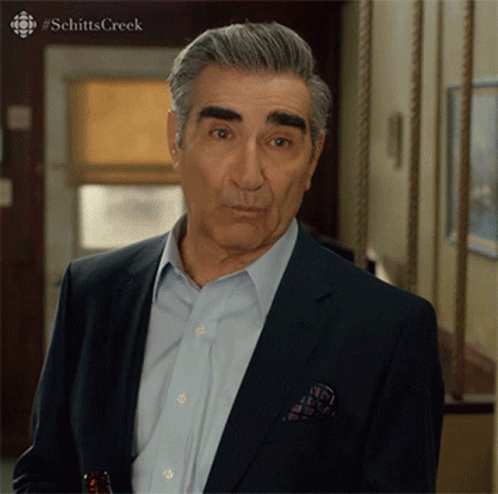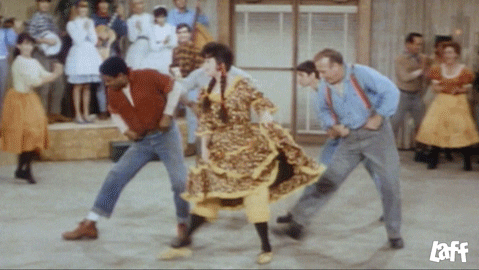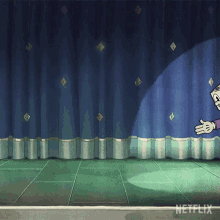
Appropriately on Halloween, we had a scary rehearsal with the shock of going through the whole of Act One; songs we haven’t sung together for some time! Needless to say, some were frightful!
It did highlight elements we need to work on:
WATCH – look up from your music and watch Elliot (sound familiar from Eamonn’s rehearsals?)
It is so important to have crisp, clean endings
Knowing when your particular part starts and ends, especially in complicated numbers like Eleanor Rigby
If you need to crescendo or decrescendo
Singing softly, loudly or in between.
Keeping the correct tempo and only slow down when directed.
LISTEN – by now you all know which notes to sing, however it is essential to:
Listen to the other voices in the choir and know where your part fits into the piece.

Do not carry on singing regardless. We are a choir and sing in harmony.
This is a collective responsibility.
When practising at home, listen to another voice part in Dropbox and sing with that to hear how your voice blends and interacts
LEARN – as you practise at home, learn the words.
It doesn’t have to be word perfect, but it will give you confidence to look up from your music, especially at the critical times, and watch Elliot who is directing us.
This will so important in songs like The Parting Glass with no accompanying music which exposes us. This is a brave choice of ending Act One and we want to get it right to ensure our audience returns for Act Two!
Learn to tell the story of the songs in your own way, but still blending your voice and timing with the rest of the choir. If you feel the music and the story this will come across to the audience.
Now here are some pointers for the songs in Act One
Generally, the Tenors and Basses are too slow and always slightly behind the beat. They know the right notes, they just need to get them in the right tempo. They need to sense the beat and they will be fine.
This is essential in songs like The Rainbow Connection that starts the concert.
Vincent needs the tenors/basses to be ready to come in confidently on ‘Starry, starry night’.
Feel the beat and watch Elliot who’s conducting will be encouraging.
Sops and Altos DO NOT Ohh first time round!
When you do ‘Oooh’ keep it bright to stop the note going flat.
DO NOT slow down at the end. Just keep it matter of fact with the same timing.
The Parting Glass is a MUST WATCH. Sung acapella there is nowhere to hide. The dynamics of the second verse are different to the first. It is a simple song, so learn the words and you can watch the directions. Your folder will be just under your nose if you do need it.
What’ll I Do needed the most work. If the Altos come in strongly on their Dm, the Sops will follow off the beat with their ‘Dm’ remembering that the second part is on the beat.
The Tenors/Basses have the words to sing, so they need to feel the beat on this.
The ending is in a different tempo, so watch Elliot and finish cleanly on the last Ooh.
The Rainbow Connection where the key change comes, slow down on ‘Magic’ with the key change on the ‘gic’. DO NOT SLIDE! Then Sops, Tenors/Basses come in strongly on ‘Have you been half asleep’
There is no slowing down at the end. Keep the ‘La di dahs’ at the end carefree.
Eleanor Rigby has each voice part coming at different times, so be aware of when your entrance is as sometimes the Tenors lead in, sometimes the altos and then the sops. Watch Elliot and he will give you your entrances. If you get it wrong (only in rehearsals, of course,) listen to the other parts and correct yourself, don’t just carry on regardless!
Autumn Leaves was in fairly good shape, and was just lacking the storytelling.
Happy Together has us all singing at the same time, but somehow the Tenor/Basses found a way to sing at a different speed! Listen to those around you.
As we go into the chorus the ‘together’ needs somewhere to go so start the crescendo earlier in the word and build it up to the end.
It is long and repetitive, so find the motivation and desire to sing it again! Make the Bah, bahs’ playful.
Lean on Me – Tenors/basses feel where the note is. When Altos sing ‘tomorrow’ their last note is the Tenors next note.
Tenors keep ‘I just might’ on the beat.
Mr Blue Sky – on the bridge on page 8 ‘I’ll remember you’ Altos and Basses get back into the chorus confidently.
Make the ‘Do dos’ playful.
Next week we will go through Act Two, which should be fairly fresh in our minds.

Remember we are in the Artisan Clubhouse next week. Please be there and bring your music and patience as we only have four weeks left before we sing with our pianist, freeing Elliot up to direct us.

Updated: Oct 26, 2023

We are expecting a sell out concert again, so get your money and orders in early. Send the money to Jan with your guests’ names and they will be marked off the list on the night. There are no physical tickets!
Merry Christmas Everyone is a festive song recorded by Welsh singer-songwriter Shakin' Stevens. Written by Bob Heatlie and produced by Dave Edmunds. It was released on 25 November 1985 and was the Christmas number one for that year. Ever since it has been included on many top-selling Christmas collections and received frequent airplay every Christmas.
It was originally supposed to be released for Christmas 1984, but when Shakin' Stevens heard about Band Aid and Wham!'s big Christmas songs, he decided to wait a year.
Our version will be an encore and we will invite the audience to join in. However, there are a few tricky little harmonies that been sneaked in, especially for the Sops who are not used to this!
Keep the starting Ooohs bright with Basses keeping to their middle range rather than too low!
It is a pop song and should be short, bouncy and colloquial mainly, but when singing ‘songs’ and ‘year’ just before the bridge, make it swell and get bigger.
Generally, it should sound like we are having a party
Note the key change and we will lead the audience into this seamlessly.
Keep the same speed at the end. Do not slow down.
Carol of the Bells – on page 2 at bar 29 is where we start to end the second time around. As Sops sing ‘their joyful tone to ev’ry home’ you will hear a short chord played before ending with the Ding, dong, ding dongs.’ Emphasise the ‘ng’ of dong as you hold the long last note.
You’re a Mean One Mr Grinch was sung at a slightly slower pace. This gives more time to annunciate the deliciously disgusting words. On the second time of singing Do be do wah; keep the ‘Wah’ very short.
However, Sops hold on to ‘peel’ but only for six counts and stop before the Altos and Tenors sing their ‘wah’

The Bahs need a little work! Homework!
The Parting Glass – this week we concentrated on the second verse. The notes are the same as the first verse, but the dynamics are different.
This verse starts loud and fermatas are not going to be followed, so we just sing through ‘…. all the comrades that e’er I had are sorry for my going away…..’ and ‘…all the sweethearts that e’er I’ve loved would wish me on more day to stay…’ as if they were one long sentence.
Do not be tempted to slide your notes; keep it clean!
Start to decrescendo on ‘That I should rise and you should not…..’ so it slowly gets very quiet.
When you reach the repeat line ‘Goodnight and joy be with you all’ it should be very, very quiet, so it can only just about be heard.
Next week Act One

We will have had the running order sent, so please put your music in the correct order.
We will run through all of Act One before the break and then go through the songs that need most work.
At this stage we should all know the notes in the right order and we will now start to work on the performance of the songs. Bring a pencil to mark your score accordingly. These nuances cannot be learned from Dropbox.
A Big Thanks
Sarah (Soprano) would like to thank us all for these beautiful flowers


And remember DON'T SLIDE !


The sudden change in the weather, coming into line with our Winter Concert theme, inevitably brings with it the dreaded colds and coughs as well the temptation to take late holidays!
With that in mind, it is even more important for everyone to keep up with their homework and practise at home.
Our final challenging new song, You’re a Mean One Mr Grinch, should now give us a folder full of music. There will just be the addition of simple versions of Merry Christmas Everyone, Let it Snow and Winter Wonderland, and our repertoire will be complete.
It can be quite daunting with all this music to go through, but it is important to keep each song fresh in your mind, especially ones we’ve done a few weeks ago. There will be no time to go through each part as if we are learning from scratch when we revisit them.
Just a little practise each day will help to keep you up to speed.
Start by going through every song and make a note of the songs and the parts you find difficult and, during the week leading up to our next rehearsal, concentrate on these tricky parts.
Use Dropbox tracks to help you.

If you are still struggling, I’m sure Elliot will help you, if necessary.
You’re a Mean One Mr Grinch is a Christmas song that was originally written and composed for the 1966 animated special Dr. Seuss' How the Grinch Stole Christmas! The song was performed by Thurl Ravenscroft and because Ravenscroft was not credited in the closing credits of the special, it is often mistakenly attributed to Boris Karloff, who served as narrator and the voice of the Grinch in the special but who himself was not a trained singer. Until Ravenscroft was publicly credited,

Elliot’s version has a swung rhythm with a jazzy feel. Dig into to the ‘Do be doos’ and keep the ‘Wah’ VERY short at the end of the phrase.
Sops, do NOT be tempted to slide ‘Mr Grinch’. Keep annunciating the consonants in the verses and make the descriptive words sound tastefully raucous!
Basses get to shine with their ‘You’re a monster, Mr Grinch’
Generally, in the music scores where there are brackets with 1 & 2, which are used save on pages of music, think of them as junctions and know when to pass through them, as with Carol of the Bells. On the second time round, we will slow down at the end (as directed by Elliot) with a clear break before the final ‘Ding, dong’ ending.
Somewhere in My Memory is one of Elliot’s favourite Christmas songs, so no pressure to get it right!
It was composed by John Williams and used as the track in the film Home Alone.
Sops shine with the start with the Altos and Tenors quietly singing Oohs underneath.
Altos also split again into Alto 1 and Alto 2; remember who you are!
‘Feeling that gingerbread feeling’ when sung the second time should clipped and short with ‘feeling’ being more expansive at the end.
You don’t want to be left behind, so keeping up practising at home is so important.
One other thing, during our short two-hour rehearsal, listen when Elliot is speaking. He is the one with the knowledge. Don’t chat and ask the person next to you. If you have a question, put up your hand and ask Elliot as only he will know the correct answer!
If we all work hard and keep up the practise at home, we will make a glorious sound.


